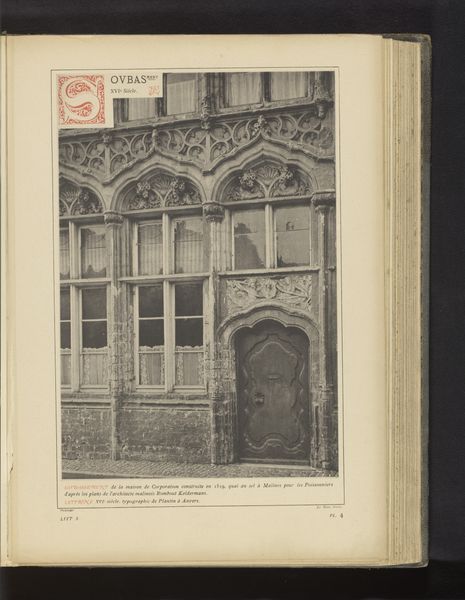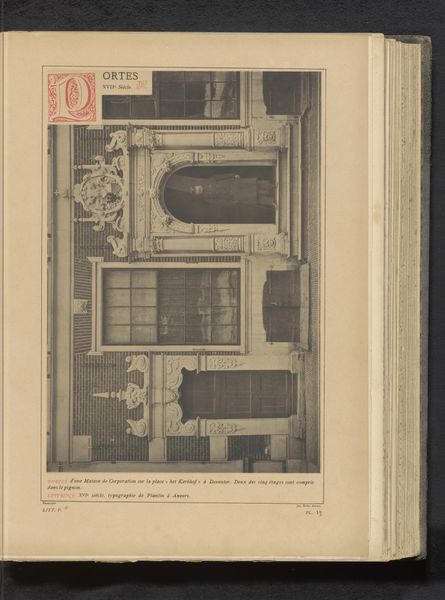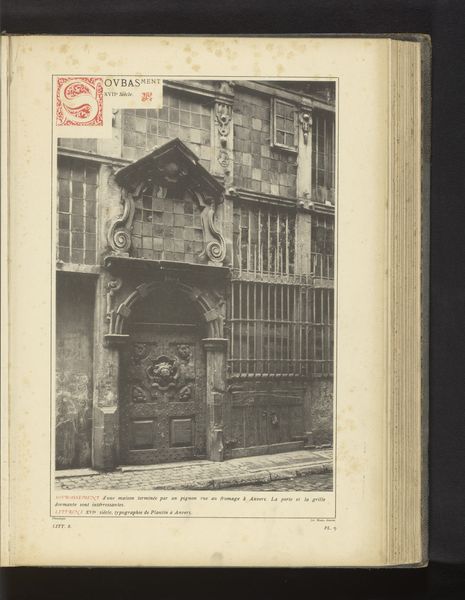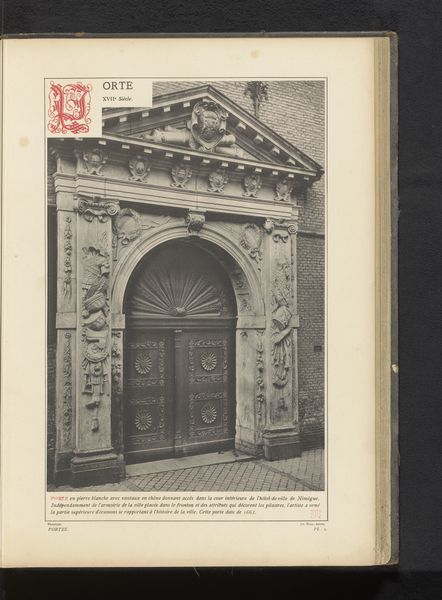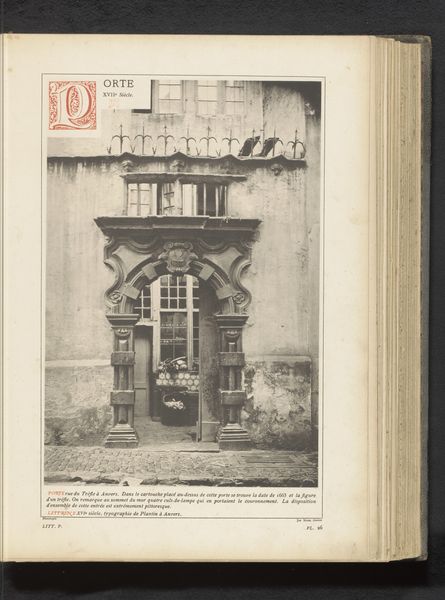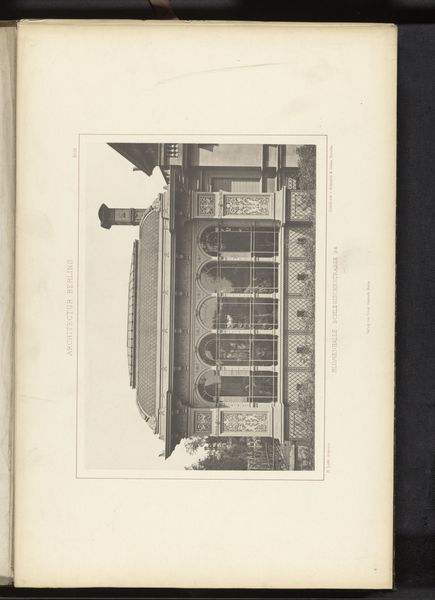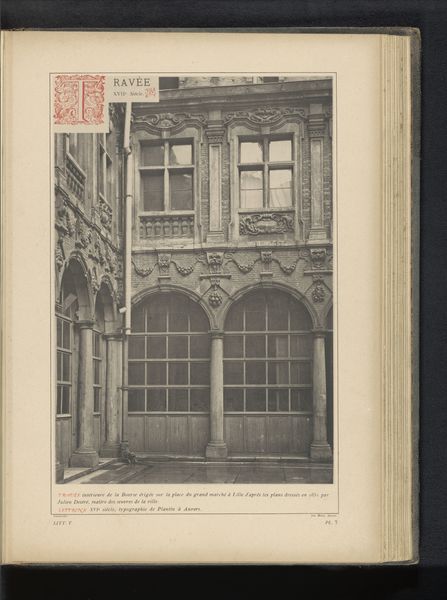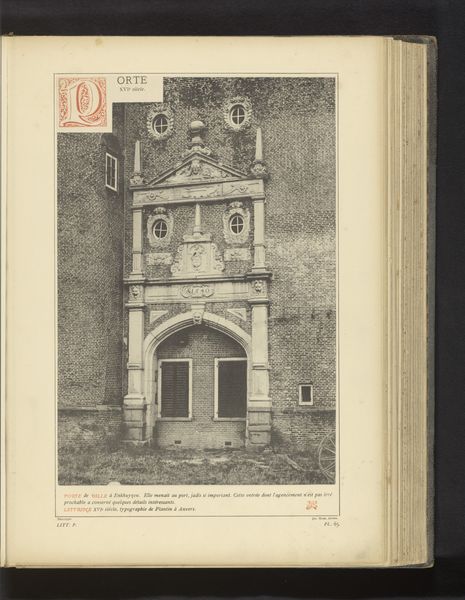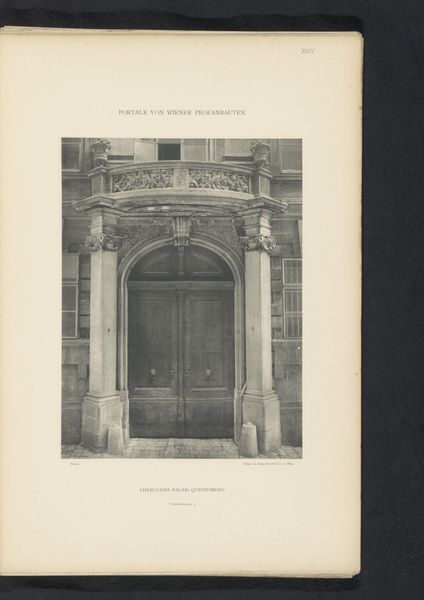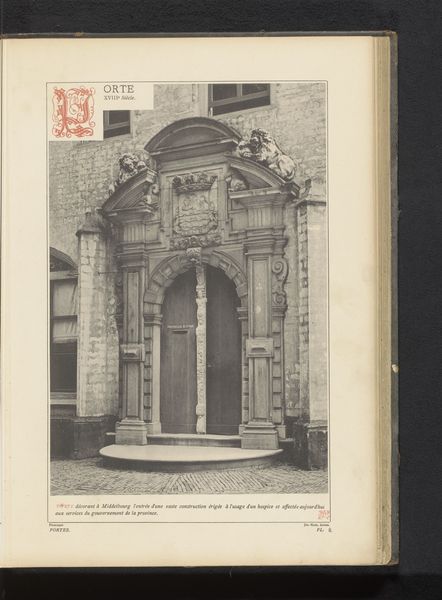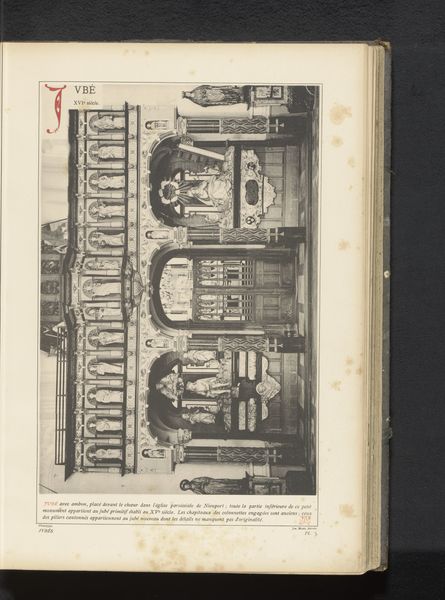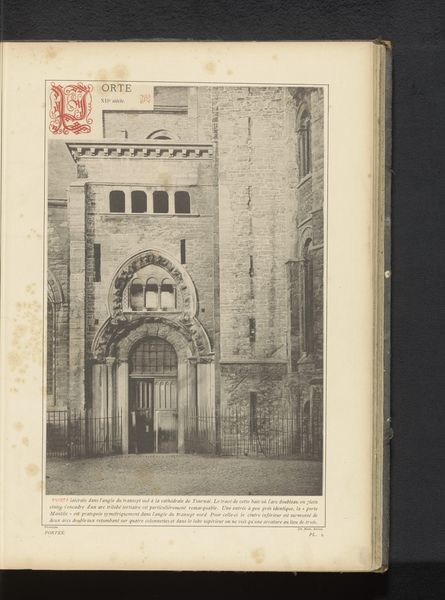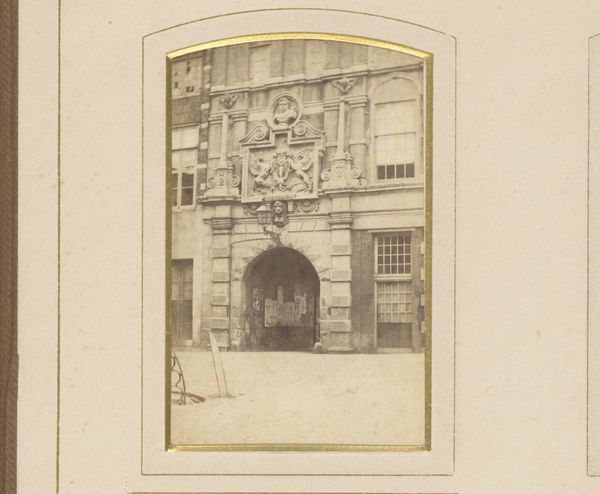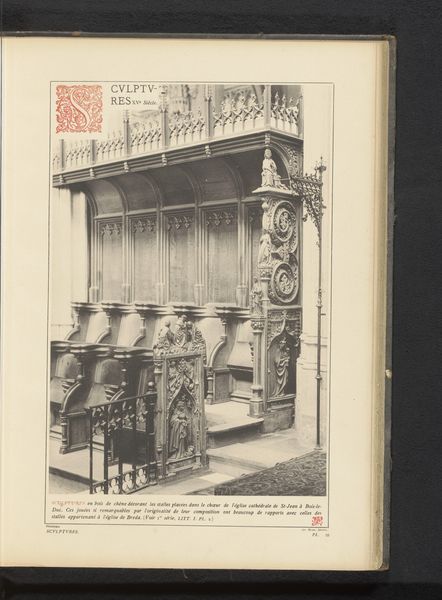
Dimensions: height 340 mm, width 234 mm
Copyright: Rijks Museum: Open Domain
Editor: This is a photograph, almost like a page from a book, titled "Facade van een huis te Brussel," placing it as a house facade in Brussels. The metadata tells us it’s dated before 1881. It gives off a very stately, almost imposing, impression. What strikes you most when you look at this image? Curator: What jumps out at me is the negotiation between public and private space embedded in this architecture. Look at the details – the ornate carvings, the grand entrance, juxtaposed with the very intimate, lace-curtained windows. It makes you wonder about the power dynamics at play. Editor: Power dynamics? How so? Curator: Well, architecture like this often served to broadcast status and wealth in the public sphere. Who was allowed in, and who was kept out? And consider the historical context: what social class likely occupied this house, and how did their wealth impact those outside of their walls? Editor: I hadn't considered it that way. It does seem to perform wealth in its structure. The carvings around the door, almost like theatre, set a stage. Curator: Precisely! Now think about those windows – a peek into domesticity, carefully veiled. It makes us consider not just who lives *in* the house, but also how gender and societal expectations are built into the structure itself. How might this architectural style uphold particular roles, and perhaps oppress others? Editor: That’s a great perspective; it opens my eyes to seeing buildings as more than just bricks and mortar. Thank you. Curator: It's an exciting avenue for seeing art’s reflection in our daily structures. It shows how architecture shapes—and is shaped by—the power relations within a society.
Comments
No comments
Be the first to comment and join the conversation on the ultimate creative platform.
